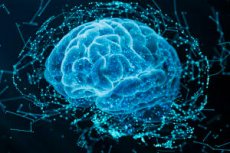New publications
Researchers have identified a new neuroplasticity mechanism linked to learning and memory
Last reviewed: 02.07.2025

All iLive content is medically reviewed or fact checked to ensure as much factual accuracy as possible.
We have strict sourcing guidelines and only link to reputable media sites, academic research institutions and, whenever possible, medically peer reviewed studies. Note that the numbers in parentheses ([1], [2], etc.) are clickable links to these studies.
If you feel that any of our content is inaccurate, out-of-date, or otherwise questionable, please select it and press Ctrl + Enter.

Neurons are important, but they are not the only players in the process. Indeed, it is the "cartilage" in the form of clusters of extracellular matrix molecules called chondroitin sulfates located on the outside of nerve cells that plays a key role in the brain's ability to acquire and store information.
A study published in the journal Cell Reports describes a new mechanism for brain plasticity, or how neural connections change in response to external stimuli. The paper is titled "Focal Clusters of the Perisynaptic Matrix Promote Activity-Dependent Plasticity and Memory in Mice."
This work is the result of a collaboration between Harvard Medical School, the University of Trento and the German Center for Neurodegenerative Diseases (DZNE) in Magdeburg.
"Sensory skills and the ability to understand our surroundings depend on brain activity, which allows us to perceive and process stimuli from the outside world. Through our brain, we are able to acquire and store new information, as well as remember information we have already learned," say Yuri Bozzi and Gabriele Cellini.
"This fascinating phenomenon is made possible by the brain's ability to continually change the structure and effectiveness of neural connections (synapses) in response to external stimuli. This ability is called synaptic plasticity. Understanding how synaptic changes occur and how they contribute to learning and memory is one of the major challenges in neuroscience."
Yuri Bozzi is a professor at the University of Trento and co-lead author of the paper. Gabriele Cellini is the first author of the study. Cellini began working on this project in 2017 as a postdoctoral fellow in the lab of Sabina Berretta (McLean Hospital and Harvard Medical School, Boston) and completed the scientific publication while working as a postdoctoral fellow in Bozzi’s lab at the University of Trento.
At the center of the study are chondroitin sulfates, molecules well known for their role in joints that also play an important function in brain plasticity, being an integral part of the brain's extracellular matrix, as originally discovered by Dr. Alexander Dityatev's group in 2001.
In 2007, a Japanese study described the presence of chondroitin sulfate clusters, round in shape and scattered seemingly randomly throughout the brain. The work was forgotten, however, until Sabina Berretta’s translational neuroscience lab brought the structures back into the scientific spotlight by renaming them CS-6 clusters (for chondroitin sulfate-6, which identifies their precise molecular composition) and showing that the structures are associated with glial cells and are greatly reduced in the brains of people with psychotic disorders.
Then, in 2017, Gabriele Cellini, newly hired into Berretta's lab, was tasked with uncovering the function of these clusters.
"We first examined these structures in detail, imaging them at very high resolution. We found that they were essentially clusters of CS-6-coated synapses organized into a clearly recognizable geometric shape. We then identified a new type of synaptic organization," the scientists say.
"At this point we had to get a little 'experimental creative'; using a combination of behavioral, molecular and sophisticated morphological approaches, we realized that these compounds encapsulated in CS-6 clusters change in response to electrical activity in the brain."
"Finally, thanks to the collaboration with Alexander Dityatev from DZNE Magdeburg and the efforts of Hadi Mirzapurdelawar from his group, we reduced the expression of CS-6 in the hippocampus (the brain region responsible for spatial learning) and demonstrated that the presence of CS-6 is necessary for synaptic plasticity and spatial memory," Bozzi and Cellini point out.
"This work paves the way for a new way of looking at brain function. It is possible that all synapses formed on different neurons within CS-6 clusters have the ability to respond together to specific external stimuli and participate in a common function aimed at learning and memory processes," they note.
"They appear to represent a new substrate for information integration and association formation at the multicellular level," add Dityatev and Berretta.
This work is the result of collaboration between several laboratories, including the Translational Neuroscience Laboratory (Sabina Berretta; McLean Hospital - Harvard Medical School, Boston), the Neurodevelopmental Disorders Research Laboratory (Yuri Bozzi; CIMeC - Interdisciplinary Center for Brain Science, University of Trento) and the Molecular Neuroplasticity Laboratory (Alexander Dityatev; DZNE Magdeburg).
